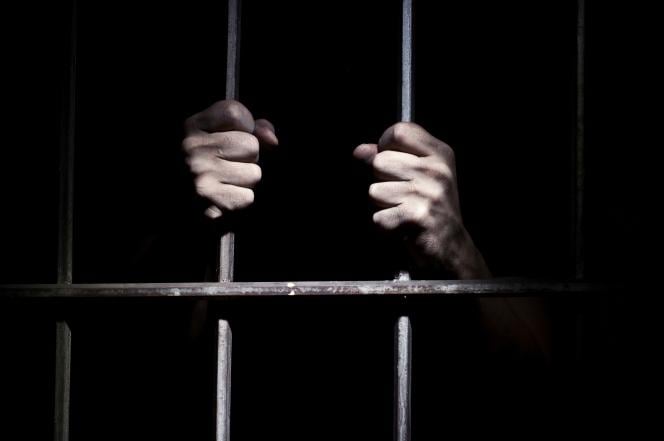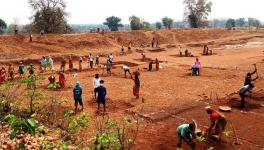How Caste Plays Out in the Criminal Justice System

File Photo (Over 55% of Undertrials are Muslims, Dalits or Tribes, says NCRB Prison Statistics Report)
How does caste play out in the criminal justice and penal system in India? Why do dalits and adivasis make for a disproportionately higher section of the prison population in India, and what are the challenges faced by dalit and adivasi prisoners in jails? What are the obstructive factors in their seeking justice and fair trials, fundamental rights guaranteed to all citizens by the Constitution of India?
In India, there has been no study on the prejudices against dalit and adivasi prisoners within the Indian prison system. Hence, the report, Criminal Justice in the Shadow of Caste, prepared by the National Dalit Movement for Justice in collaboration with the National Centre for Dalit Human Rights, which was recently released in Delhi, is a one of its kind attempt that aims to explore the pains and agony of victims of police excesses and those incarcerated.
The study brings out the instances of discrimination based on caste at every layer of the criminal justice administration system, that is, the pretrial stage and inside the prisons, and is an attempt to start a process of breaking this silence.
Shocking Disproportionality
The National Crime Records Bureau (NCRB) in its 21st Prison Statistics in India report 2015, recorded that over 55% of the undertrials prisoners in India are either dalits, adiviasis or Muslims. An analysis of this data showed that this number was grossly disproportionate to the combined population of dalits, adivasis and Muslims which amounts to just 39% of the total population according to the 2011 Census.
Additionally, data on the caste background of arrested and convicted persons also points to a shocking disparity. According to NCRB, the proportion of Scheduled Castes (SC) and Scheduled Tribes (ST) population in prisons is much higher than their proportionate population in the country as a whole.
An analysis of the caste-based classification of undertrials from the NCRB Report 2014 revealed that 21.6% are SCs and 12.4% are STs. Dalit’s and adivasis -- two of the most vulnerable sections of Indian society-- make up
a considerable number of India’s prison population. Although the proportion of these two communities in India adds up to about 24.2%, their share amongst prisoners is considerably higher at 34%. Dalits make up 22% of prisoners, almost one in four. But their proportion in the population is about 21.6%, according to the 2011 Census. While adivasis make up 12.4% of prisoners, their share in the general population is 9%.
Major states that have reported considerably high difference between percentage of SC/ST population and prisoners are Assam, Tamil Nadu, Maharashtra and Rajasthan. While the percentage of SC/ST population in Tamil Nadu is 21.2%, the percentage of SC/ST prisoners in the state is 38.6% – a difference of 17.4%.
According to the report, the reason why dalits and adivasis make up large numbers in jails is due to “deliberately delayed police investigation. Many prisoners languish in prisons because the police do not complete investigation and file the chargesheet on time. This is a very serious matter because such people remain in prisons without any clue of a police case against them. However, the low bench strength of judges seems pale in comparison to the role played by the police and prosecution functionaries in delaying investigation and trial processes.
While one reason is the low police-population ratio, what compounds this is the endemic caste bias in police that has been often found to be the leading reason for delay in prosecution, as well as unnecessary arrests. There are also issues of ‘unjustified or unnecessary’ arrests that police officials often resort to, in order to demonstrate the progress of investigation in counter cases filed by the dominant castes.
Systematic Violence against “Habitual Offenders”
The colonial practice of labelling certain nomadic communities as habitual criminals has continued even after the repeal of the Criminal Tribes Act. Take for instance, the Kuravar community in Tamil Nadu. In 2014, fourteen members of the tribe were arrested and tortured in police custody, falsely implicating them in crimes they did not commit and forcing them to give coerced confessions. This forced the National Commission on Scheduled Castes to probe and release a scathing report on police atrocities.
It has become convenient for the police to catch hold of the “Kuravars” and foist false cases against them. They are kept under illegal detention and are subjected to brutal forms of torture to extract “false confessional statements” regarding crimes which they had not committed. For these reasons the entire community lives in fear of detention and arrest. The Kuravar men are regularly taken from their houses and illegally kept for long time in police custody, subjected to third degree tortures and are forced to confess statements for various criminal cases. With respect to the Kuravar women, they are verbally, physically and sexually abused at any time at the discretion of the police. The Kuravars in districts like Thanjavur, Ariyalur, Thiruvarur, Salem, Trichy and Villupuram experience high levels of false criminal charges, illegal detention, torture in custody, sexual abuse and custodial deaths.
Dysfunctional Prison System
The report also noted how the prison system, plagued by various structural ills, violates the rights of dalit and adivasi prisoners.
Prison officials are one of the most important and often, the most neglected part of the criminal justice system. They regularly review the legal status of undertrials to determine whether they have spent enough time in custody to warrant release under Section 436A of the Code of Criminal Procedure (CrPC). Unfortunately, on average, only 66.3% of the sanctioned posts are filled, with Bihar having only 21.1% of the sanctioned prison official strength. Prison officials and staff includes officers, cadre staff, correctional staff, medical staff, ministerial staff and others. Jail cadre forms more than 70% of the force.
The Model Jail Manual 2016 recommended that there should be one guarding staff for every six inmates. In reality, it is almost half the standard with 10 prisoners per guarding staff. “Without the augmentation of guarding staff and correctional staff, prisons will stay fixed in adversarial staff-inmaterelations, in a culture of punishment with extra lock-up hours to serve ‘effective’ management,” the report stated.
Effects of Poverty and Illiteracy, and Lack of Access to Legal Aid
Apart from the various structural and procedural issues, most of the dalit and adivasi undertrials are poor and illiterate. Most of them are either unaware of the provisions or unable to access these provisions such as bails or sureties, or are too poor to arrange personal bonds or even sureties from someone to secure bails. On the other hand, India lacks competent and adequate legal representation for those incarcerated. Even the legal service authorities at the national and state level have failed to comprehensively identify the undertrials in need of bail or sureties.
Thus, in the absence of a committed legal structure and system, lakhs of undertrials spend years behind the bars despite the quasi - judicial mandates issued by the apex courts on their release.
The report stated, “Despite the existence of the right to legal remedies, however, because of their weak socio-economic position and relative lack of information on their legal and fundamental rights, dalits and adivasis often find it difficult to access judicial remedies. Further, where they try to access such remedies, pathways like legal aid are not made easily available to them. They also find that even when they take recourse to the law, the proceedings are protracted, witnesses are reluctant to testify in their favour against more powerful persons, and the potential for manipulation of the legal process is huge. In addition, even though they are victims, they cannot afford to forego their daily wages for days on end in order to attend the courts. The result is that legal provisions become ineffective in the delivery of justice.”
At the end, the report comes across as a scathing indictment of the Indian legal system. It is the polity, including the system which has to wake up and recognise the rights of all citizens.
The writer is an independent journalist based out of Delhi, and specialises in reporting on legal, human rights and gender issues. He tweets @SauravDatta29. The views expressed are personal.
Get the latest reports & analysis with people's perspective on Protests, movements & deep analytical videos, discussions of the current affairs in your Telegram app. Subscribe to NewsClick's Telegram channel & get Real-Time updates on stories, as they get published on our website.
























